If you’re looking a health-conscious person with a little one on the way, you may already know why it’s so important to choose non-toxic baby products. You can save yourself hours of work and stress by grabbing a non toxic baby registry checklist here.
Especially if this is your first time as a mom, you may be wondering what you need. But don’t worry, we’ve got you covered on natural baby registry essentials.
I’m a PhD chemist and exposure scientist, and I’ve spent years studying how pregnant or breastfeeding mothers and their babies are exposed to toxic chemicals. And as someone who has had four children, I’ve had a lot of practice in what to put on a baby registry.
That’s why I wanted to make this baby registry checklist printable for you. It’s easy to use, plus, it helps you make sure you only get the best non toxic baby products.
I’ll suggest one or two non in each category, but that doesn’t mean it’s the only one available. In fact, I have whole articles written about many of these products! You can click on links in each category to learn more.
Disclosure: This article contains affiliate links. As an Amazon associate I earn from qualifying purchases. You can read my full policy here.
Table of Contents
Bedtime essentials
If you’re following best sleep practices, you can save a ton of money because there’s no need for a separate nursery. Find out what you actually need instead.
Best co sleeper bassinet / crib
MORE DETAILS: The best non-toxic cosleeper bassinets
The American Academy of Pediatrics still suggests that baby sleeps in your room until at least six months (preferably the whole first year).
So instead of ponying up for an expensive crib, consider a bed-side bassinet. You can fix this style of crib to be a co sleeper by bringing it up to the height of your bed. And the best part is that if you’re breastfeeding, it will be much easier to roll over, feed your baby, then roll back to bed for sleep.
I love the Venice Child California Dreaming foldable bedside bassinet. It can be:
- Adjusted to bed level for easy in-and-out for feedings
- Zipped down on one side to make this a true non toxic co sleeper bassinet
- Hooked to your bed with attached safety straps
MORE DETAILS: Best mattresses for bed sharing with baby
Best crib mattresses
If you choose to have a separate nursery for baby (they have to have their own room anyways), as well as a bassinet for the early days, you’ll likely need a crib and crib mattress.
MORE DETAILS: The best organic crib mattresses
Naturepedic has a beautiful, safe organic crib mattress that is lightweight and well-made.
Whether you choose Naturepedic or one of their competitors, make sure you choose a dual-sided mattress that has a slightly softer side for when your little one grows into a toddler.
NOTE: Mattresses from before 2013 are especially likely to have toxic flame retardants and wouldn’t be labeled with that info, but even newer crib mattresses often contain PVC, phthalates, and other hazardous chemicals. Be careful if you get a hand-me-down mattress.
Best cribs
MORE DETAILS: Natural nursery: Non toxic cribs
Not only will you need a mattress, but you’ll need a crib to put it in. I suggest one that converts to a full-sized bed as your baby gets older.
My absolute favorites are from Green Cradle, an American-owned company that hand crafts all their cribs with solid wood. I can’t say enough good things about them. The only thing is that they can be on the pricier end.
If you’re looking for a more affordable option, I suggest the Babyletto Sprout. It’s still made of solid wood (although it’s pine instead of hardwood), and it can convert to a full size bed.
Crib sheets and protectors
Make sure you get at least 3 crib sheets – That way, you have one to wash, one to use, and one to spare (because sometimes poop-splosions happen multiple times in a row). Newton Baby has some multi-packs available with sweet prints.
Don’t forget a few bassinet crib sheets so you have some to swap out after poop-splosions. These are made of cotton that is certified toxin-free – just check they’re the right size and shape.
And of course, you’ll want to protect your crib or bassinet mattress. This crib mattress protector from Naturepedic is organic and comes in both a standard crib mattress size and an oval size.
Wearable blankets – the Zipadee Zip

I know that swaddling is really popular, but if you bed share, it isn’t safe. Your baby needs his little arms and legs to alert you of his presence.
Plus, swaddling the legs in tight can put baby at a greater risk of hip dysplasia or dislocation.
And you should never use a loose blanket to cover your baby to keep his face from being covered up.
This is why I love the Zipadee Zip! I only discovered this wearable blanket after my fourth was born. It allows your baby’s arms to be covered even when he’s not swaddled, plus your baby looks like an adorable starfish in it :).
And the Zipadee Zip comes in a bunch of adorable patterns. Stick to lightweight Zipadee Zips if you plan to co sleep since baby will also have your body heat nearby. Get at least 2 (probably 3) of these wearable blankets so you’ll have one for when the other is dirty.
Breastfeeding essentials
When you’re first pregnant, you may be ambivalent about breastfeeding (I know I was!). You may think it doesn’t really matter, but it does!
Breastfeeding carries so many long-term health benefits for both mom and baby. Truly, it’s the foundation of public health. So if you can, it’s worth at least trying to breast/chestfeed.
RELATED: Advantages of breastfeeding
One of the (many) great things about breastfeeding is that you don’t have to worry about buying or carrying around a bunch of stuff. You’ll have no formula costs, and you only need a few bottles for pumped milk. Plus, breast pumps are often covered by insurance, so the most expensive item becomes free for you!
RELATED: Newborn breastfeeding: 12 tips
Best breastfeeding class
It’s true that breastfeeding is natural, but it still helps to get some education on it!
Most hospitals offer breastfeeding classes. Some are fantastic, and some are…not so much.
That’s why I strongly recommend Milkology’s Ultimate Breastfeeding Class. It is hands-down the best breastfeeding class on out there (and it’s really inexpensive too!). In fact, I have a whole post reviewing this fantastic product.
MORE DETAILS: Milkology’s The Ultimate Breastfeeding Class review (by an experienced breastfeeder)
Best breastfeeding supplies
For the first few weeks, you’ll probably want some gel soothies for your nipples. You shouldn’t be in major pain, but I’d be lying if I told you there might be some tenderness (like getting used to a new pair of shoes, but on your nipples).
Once your milk comes in, you’ll also *likely* need some breast pads for leakage. Reusable breast pads are ideal to save money (and the environment).
This pack has enough to last you a week, so you don’t have to worry about constantly washing them (trust me, you’ll be doing at least weekly laundry with a new baby).
Nursing bras
Nursing bras make things so much easier! I remember there was a learning curve for me to figure out those pesky cup snaps, but once I did figured them out it became much easier to feed my baby.
Choose bras with no underwire (as they can trap milk and cause plugged ducts or even mastitis).
The best nursing bra out there is the Simply Sublime by Kindred Bravely. They’ve got:
- Easy nursing and pumping access with clips
- Adjustable straps for changing breast size during pregnancy and postpartum
- Soft and stretchy material that supports
- No seams (avoiding scratchiness and irritation)
MORE DETAILS: Best sports bras for nursing moms
Prefer a cheaper option? I also like this style from Angelhood as they work well even without the underwire. Honestly? The girls look pretty good in them! These bras are nice and smooth under clothes and surprisingly supportive.
After four kids, this style will be my daily bra even after I’m done breastfeeding. I suggest getting at least 3 – one to wear, one to wash, and one for your drawer. Even so, you’ll need to wash them pretty frequently if you forget to wear breast pads inside them.
Nighttime nursing bras
Once you’ve given birth you’ll need a nighttime bra too, at least for a few weeks.
A nighttime nursing bra will give you gentle support (I feel super silly writing that phrase), but more importantly, it will give you somewhere to put those breast pads for when you suddenly start leaking a huge amount of breastmilk at night (ask me how I know). As in, if you’re not wearing a night nursing bra with pads in it, you should probably sleep on top of a towel.
Kindred Bravely makes organic cotton sleep bras that are super comfortable. Their best feature is openings in the inner layer to insert breast pads into the bra (most bras require you to just stick the pad into the bra against your nipple, leading to the pad falling out in the middle of the night and milk leaking everywhere in your bed).
Regardless of the brand you choose, the crossover design of nighttime nursing bras make it easy to access your breasts at night when you’re too sleepy to fool with snaps. Plus, they’re softer than regular nursing bras. Again, a pack of 3 (jsyk, these don’t have the inner layer breast-pad insertion layer) makes things easier because they’ll need frequent washings between leaks and spit-up.
Nursing camis
The other essential for breastfeeding? Get a few nursing camis in neutral, layerable colors. When I have a new baby, I wear a nursing cami pretty much every day.
Nursing camis usually come with a shelf bra, and they have snaps on the strap that allow easy access to feeding.
MORE DETAILS: Best nursing tanks and camis
Kindred Bravely is a favorite nursing cami for a reason. Their Simply Sublime maternity tank has:
- Enough support that you won’t need to wear another bra underneath
- Easy nursing and pumping access with clips
- Adjustable straps for changing breast size during pregnancy and postpartum
- Soft and stretchy material
- No seams (avoiding scratchiness and irritation)
And yes, the Kindred Bravely nursing cami is a little pricier than some others out there, but with its seamless construction and supportive underwire-free bra, it’s worth the investment.
If you’re looking for a cheaper option, this three pack is a great choice. It comes in neutral colors, is long, and fits both during pregnancy and postpartum. It has a shelf bra, so you may want another bra underneath depending on the amount of support you need.
Nursing camisoles are really helpful for nursing in public (especially if you’re just getting used to doing so or you’re nervous about it). Here’s how you can use a nursing cami to nurse your baby with practically no skin showing:
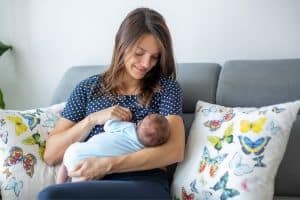
Wear a nursing cami (with or without a bra, depending on how much support you need) and put a shirt over that. When it’s time for baby to eat, just pull up the shirt, pull down the snap for access, and your baby will be nursing without any of your midriff showing. You’ll have just a little bit of skin out, and baby’s head will be covering it, like in the picture above.
Breast pumps
If you’re going back to work, it’s a good idea to go ahead and choose an electric double breast pump. The awesome thing is that pumps are now often covered by insurance.
The Spectra S2 pump with Freemie cups is another great choice for working moms. Plus, the Freemie cups allow you to pump without needing a hands-free bra.
If you’re staying at home, it’s still a good idea to have a breast pump, but a simpler one will work fine (although you may still want an electric pump if you’ll be away from your baby a few days a week). Try something like this manual breast pump. It’s cheaper and easier to carry with you if you go out of town.
Breast milk bags
You’ll need something to store all that liquid gold in, and you want to make sure your milk isn’t leaked or spilled. I am partial to Lansinoh Breast milk freezer bags. They’re strong, they have a double zipper to prevent leaks, and they are BPA and BPS free, so you can feel safe using these to store your baby’s milk.
Bottles
You’ll probably want to have a few bottles for that expressed milk. There are three main concerns when choosing a bottle for breastfed babies:
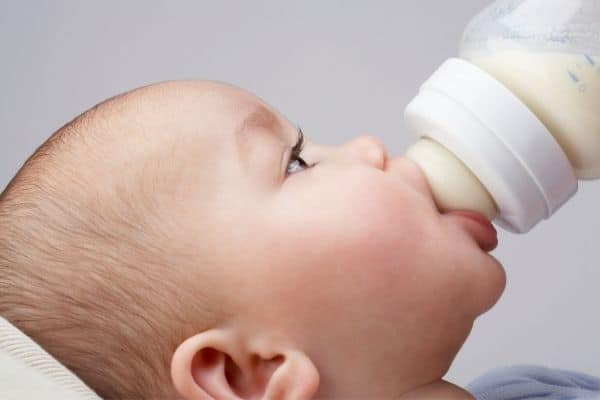
- Hand-me-down bottles (or even bottles from your own older child) may not be safe. That’s because bottles made before 2013 were often made of polycarbonate, which contained BPA and/or BPS. Newer bottles are made of polypropylene and are free of bisphenols and phthalates.
- Choose a bottle style that allows baby to have lips flared around the base of the nipple (not a bottle that they sucks on the nipple itself). This will best mimic breastfeeding. Check the picture above to see what I mean. NOTE: The bottles marketed to be “shaped like mom” or whatever actually usually are the worst for this. That’s because your nipple shape changes drastically in baby’s mouth.
- Always use slow-flow nipples for breastfed babies. This way, babies don’t get used to quicker meals and come to prefer a bottle.
The other thing to be aware of: Babies will develop their own preference to a particular brand of bottle, and it’s different from one child to the next.
With one child, we used Tommee Tippee Closer to Nature bottles and they worked great. Our fourth child absolutely refused Tommee Tippees but liked Avent Natural bottles.
Burp Cloths
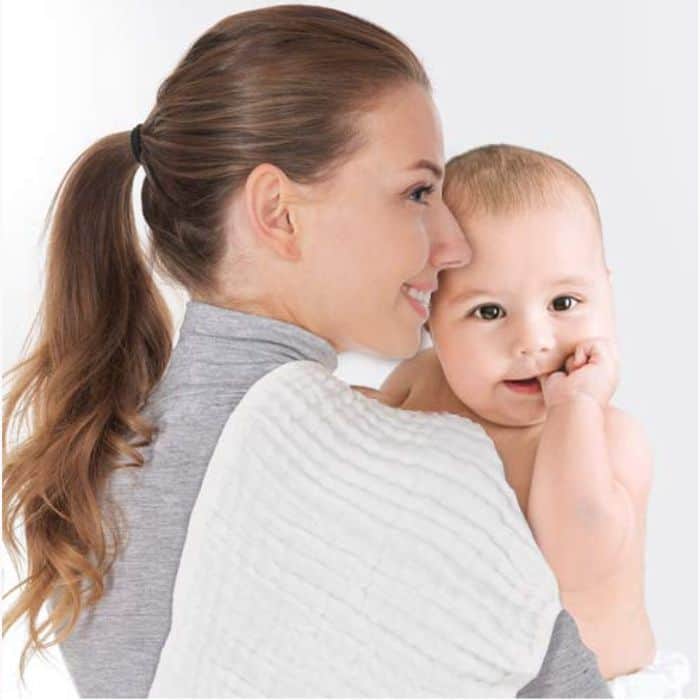
I suggest that you get plain white muslin burp cloths.
Why? First, they’re most absorbent and they work best. Secondly, if you get super cute burp cloths you’ll not want to use them because it’ll make you sad to get spit-up on the pretty little patterns so then you’ll ALSO buy some plain white burp cloths (ask me how I know).
Moral of the story: Just get plain ones.
You’re welcome.
Bottle and pump cleaning supplies
You’ll need to clean all these bottle and pump parts frequently. You can get away with just a bottle brush (I like the Munchkin brand because it has a little-bitty brush you can also clean out the bottle nipple and other hard-to-reach parts of your pump) if you’re super vigilant to clean bottles just as soon as you’re done with them.
Day-to-day and baby safety items
Your routine changes when there’s a new baby! While you don’t need a ton of new stuff inside your home, there are a few things you can get to make your life easier.
Glider / Rocker
Especially in those first few months, you and baby will spend a lot of time snuggled up in a glider. There’s a lot of things to think about when choosing a glider for your baby, including:
- How long your legs are (you’ll want them to touch the ground while sitting comfortably)
- Whether or not to get a stool (I say yes, it makes a huge difference)
- If baby has older siblings who can get fingers pinched in rocker/glider parts – choose something without an exposed glider mechanism
- How much cushion you like
- How wide a seat you need to give you room while still supporting your arms
- Arm height (the correct height to support you as you hold baby for feedings)
- Color (a white glider is gorgeous but may get stained)
- Materials (since you and baby will be in this glider for hours, you need it to be non-toxic. Look for a Greenguard Gold certified model.)
If you want a glider that has more of a cozy sofa look, I recommend the Crawford Pillowback Comfort Swivel Glader by Namesake. You can also get a coordinating ottoman, which is really helpful for propping your feet up so you can comfortably feed baby (you’d be surprised what a difference having your feet propped makes).
If you’re looking for something with a higher back (also a good idea since you’ll be spending a lot of time in this chair), you can also check out the Babyletto Cali Pillowback Swivel Glider.
Whatever you choose, you’ll want a glider with arm rests low enough to comfortably support your arms, but high enough to easily bring baby to breast (instead of leaning down over your baby for hours).
Infant carseat
To even get home with your baby, you’re going to have to have a properly installed carseat.
With an infant, it’s nice to have a carseat that is easy to carry around. After all, if you get somewhere and your baby is still asleep, it’s much nicer to be able to carry him in the carseat instead of waking him up.
The only problem? Carseats are notorious for containing toxic flame retardants. With your baby all snuggled up and surrounded by the foam padding (probably for hours over their first few months of life), that’s a lot of chemical exposure.
That’s one reason I love the Nuna Pipa RX. It is free of flame retardants and Greenguard GOLD certified, almost unheard of for infant carseats. This car seat comes with a base that allows you to literally click the seat in without having to hassle with seatbelts every time you switch cars (although there is a seatbelt option for strapping the seat quickly into a taxi). The Pipa RX will fit your baby for years as it has a weight recommendation of 4-32 lbs.
Plus, you can save a lot of money by buying an additional base for dad (and maybe grandparents). The bases are much cheaper than an extra carseat. Then, you can simply pass around the carseat with your little one and be ready to go.
Baby carriers / Baby wraps
Once your baby is old enough (and your back and abdomen are recovered from the immediate shock of childbirth), it become much easier to do life if you baby wear, especially if you have older kids too. Most babies love to be held all the time, particularly during those first three months, which we call the “fourth trimester.”
MORE DETAILS: Best baby carriers
Best for newborns – Boba baby wrap. This stretchy wrap is cozy for small babies and comfortable for parents. It’s the most most comfortable wrap and feels like you’re just cuddling your baby.
The Boba is perfect for walking around the home or even doing light housework (NOTE: Don’t bend over while using a stretchy wrap or any other carrier unless you are securely holding onto your baby with a hand).
Why am I being so brand specific here instead of recommending the Moby (which is easier to find in big-box stores)? The Boba is much more lightweight and breathable. Plus, it holds its shape better and doesn’t stretch out quite as much. When it’s warm outside, this feature makes a big difference.
Boba wraps come in a bunch of beautiful colors and prints. The only problem is which one to pick.
Best for no tying: The Ergobaby Adapt carrier. If the idea of tying a wrap makes you nervous (it’s really not hard once you learn, but I totally get it), or if you want a more supportive carrier for hiking or slightly more strenuous activity, you should go with a soft structured carrier. For that, I recommend the Ergobaby Adapt carrier.
The Ergobaby Adapt works from 6ish weeks and well through toddlerhood. You can use it for a front carry, or after 6 months you can use it for a back carry (like I just did today hiking up a trail with my family).

Yes, the Ergobaby brand is a little pricer than many carriers you’ll find at your local big box store, but honestly? With baby carriers, you get what you pay for. I’ve had cheaper carriers, and they don’t fit well and leave you with back, shoulder, and neck pain (and even headaches!). Even worse, poorly supportive carriers can also also lead to hip dysplasia in your baby.
This is a product you don’t want to skimp on. Fortunately, it comes in several colors and patterns so you can make a choice that you’ll love for the years it will last.
Changing pad
There’s no need to buy a whole changing table, but unless you’re willing to gamble on your baby poopsploding on your bed in the middle of a diaper change, I strongly suggest getting a changing pad. We place ours on our dresser, and it fits perfectly.
Since your baby will be spending a lot of time here, I suggest the Sealy Baby Soybean Comfort Pad. The contoured pad protects baby from rolling off (obviously don’t leave your baby on a diaper pad unattended), and it’s PVC-free and Greenguard Gold certified, meaning that this pad is non-toxic.
While the pad is waterproof (a definite plus), you’ll still probably want a few changing pad covers. There are a ton of cute patterns out there (although I really like these cute little bears), so just find the ones that you like.
Diaper pail
This is your call. Baby poop honestly doesn’t smell that bad, so if you’d rather have a regular trash can and call it a day that will work.
But once your baby starts eating solids, dirty diapers get a little stinkier. At that point you might wish you had a diaper pail.
Many diaper pails use special scented trash bags that may contain toxic phthalates. It would be better to avoid those.
The Ubbi Steel diaper pail is my recommendation. Its award wining design locks away odors. Best of all, it doesn’t require special diaper bags, saving you a lot of money and panic trips to the store.
And if you want to get a cute color or design to match your baby’s nursery, you can do that too.
Diapers
After 4 kids and nearly 10 years of diapers, I’ve tried pretty much every brand out there. I’ll keep it short, but generally, cheaper diapers don’t work (other than Target’s Up & Up brand – they’re good). They leak, and it gets really gross, really fast.
And depending on the brand, even some of the more expensive ones don’t work well. They either leak really badly, or they have fragrances (which often hide toxic chemicals).
That’s why I was excited to try Freestyle diapers. Their eco-friendly core is made of bamboo (not wood pulp), and this is truly the most absorbent diaper I’ve ever tried. Plus, they’re 88% biodegradable and free of chlorine, parabens, phthalates, and other toxic chemicals.
You can order Freestyle diapers through their subscription and save lots of money. Plus, you’ll be able to changes sizes whenever you need to.
High chairs
You’ll want a high chair that’s
- Adjustable
- Made with a removable tray (for easy clean-up)
- Usable directly at the table without the tray
- Built to grow with your baby
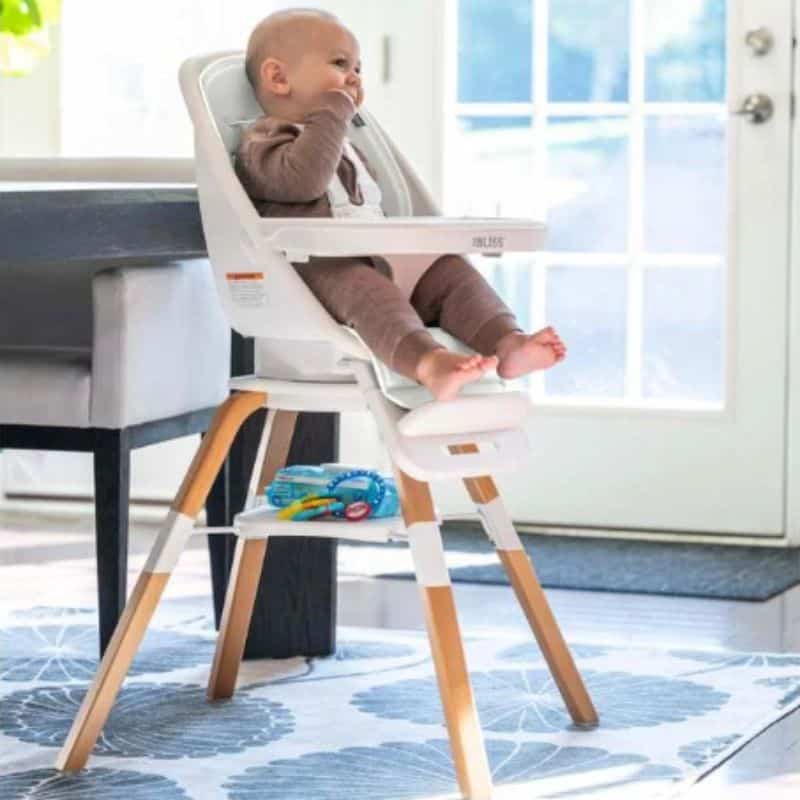
That’s why I like this 2-in-1 Turn-A-Tot high chair from TruBliss. It has 6 adjustable height levels and can be used for babies from 6 months to 6 years as a toddler chair up to 40 lbs.
Baby feeding
If you choose to do baby-led weaning (which I have loved with all four kids), you won’t need baby spoons or forks very often, because baby can just use their hands.
But you’ll want to pay attention to what kinds of baby spoons you get. Most spoons are designed for a parent to hold and put in baby’s mouth. With baby led weaning, your baby is meant to feed himself. Therefore, you’ll want a baby spoon with a shorter handle, like this.
These soft silicone spoons are great for baby to practice with! They’re easy to hold, non-toxic, and gentle on gums.
And while most foods will go directly on your baby’s tray, some foods (like soup) may work better in a bowl. I strongly suggest you get bowls with a suction bottom (like these) so that you have a better chance of the bowl staying put.
Bath time/baby care
There are a lot of baby products out there. Unfortunately, several are unnecessary or even unsafe! Here are the ones I recommend.
Baby wash
We love Baby Bum Baby Wash. The light tropical scent is lovely. Plus, Baby Bum Body wash is vegan and phthalate, paraben, sulfate, and silicone-free.
Baby lotion
After bath, I like to use Aveeno Baby Moisturizing cream. This lotion is great for baby’s sensitive skin and is paraben, phthalate, and fragrance-free.
Baby healthcare kit
Safety 1st makes a great all inclusive grooming kit with a brush and comb, baby nail clippers, a medicine dispenser, a nasal aspirator, and a thermometer. All those little things you forget about until you need them. Plus, it comes with an easy carrying case for travel.
Temporal thermometer
You know how they take your baby’s temperature at the hospital, right?
It’s not very fun to do that at home.
And your child will be at least 3 or 4 before she understands how to place a thermometer under her tongue. For that reason, I suggest getting a temporal thermometer (one that takes a temperature across the forehead).
We’ve used the Exergen thermometer for years and it has done great for us. In fact, we even use it to check our own temperature now.
Play and tummy time items
Here’s the honest truth: Babies don’t need many toys. For the first few months, a toy like a rattle will do nothing but stress a baby out, and even after, babies are still easily entertained with only one or two objects around.
But it is nice to have a few fun items (preferably ones that are battery-free) for your baby. There’s no need for electronics or flashing lights, just a few objects for baby to look at and bat around. It’s so fun to watch the pleasure your baby will get from the simple cause-and-effect of “kick play mat, watch toys move.”
Here are some of our favorite baby toys after four kids.
Oball rattle ball
Oball toys come in a lot of fun designs, but I like this one because it rattles and because you can throw it and chase it during the crawling stage.
This ball is made of soft and flexible silicone and is free of BPA, PVC, and phthalates. The shape and size is great for teething babies, plus, the little holes make it easy to grip.
Play mat
It’s really nice to have a play mat for tummy time. And once your baby is a little older, he’ll love batting at the toys and kicking the bars to watch what happens.
We hd an Infantino 4-in-1 Twist and Fold Activity Gym and our little guy really enjoyed it. He spent a lot of time playing with the toys (which are BPA free) and looking in the little mirror.
While there are a lot of great options out there, I still suggest choosing a play mat that doesn’t have light-up or singing toys. Everything is still new in your baby’s world, so toys he can manipulate on his own (without just pushing a button) will still be very exciting.
Why aren’t baby clothes on this list?
You guys: I have an obsession with tiny adorable baby clothes. It’s a problem.
And you know what? I’m not the only one.
Whether you ask for them or not, EVERYONE will buy you cute baby clothes. You’ll get a bajillion onesies, footie jammies, and tiny outfits.
So there’s sort of no point in registering for baby clothes, because you’ll get them either way (same goes for baby blankets. You’re going to have a million baby blankets even though you only really need 2 or 3).
If you have any control over the situation though, try to only get a few (like, 5-7) newborn sized shirts and jammies. Unless you have a premie, these will only fit for like 4-6 weeks. And some “blue-ribbon” babies are born already too big for newborn clothes!
Instead, encourage people to think ahead and buy clothes for the first 12-18 months. If you have a winter baby, ask for short-sleeve 6 month onesies and long-sleeve 12 month shirts, but if you have a summer baby, ask for cozy warm 6 months outfits and 12 month short sleeve rompers. That way, you’re prepared for a year on clothes.
Why non toxic baby products matter
Many conventional baby products, like cribs (and crib mattresses), changing pads, and even car seats and strollers are made with toxic chemicals. These chemicals include phthalates, flame retardants, formaldehyde… the list goes on.
While I don’t like to spend a ton of energy focusing on the negatives, these compounds are hormone disruptors. That means they can cause long-term health effects, including higher risks of childhood asthma and wheezing, infertility and reproductive issues, even some cancers.
And babies spend a lot of time in close contact with their stuff. They sleep on their mattress, in their crib, for 12-17 hours a day, breathing in any volatile organic compounds coming off the mattress surface. They put all their toys in their mouth. They may spend lots of time in a car seat. That’s why it’s so important that you choose safe materials as often as possible.
Often, we can use third-party certifications to learn if a product is safe or not, but some of them may be misleading. That’s why I’ve put together this non toxic baby registry checklist.
Conclusions on non-toxic baby products for your registry
This is seriously everything I can think of that you need for your non-toxic baby registry!
Don’t forget to sign up for your free printable baby registry checklist that has all of this stuff in one easy place. Plus, you’ll learn my favorite non-toxic brands AND the 6 chemical classes you most need to avoid for your baby. You can grab the checklist for non toxic baby products here.

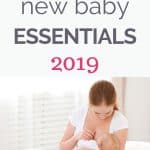


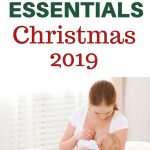

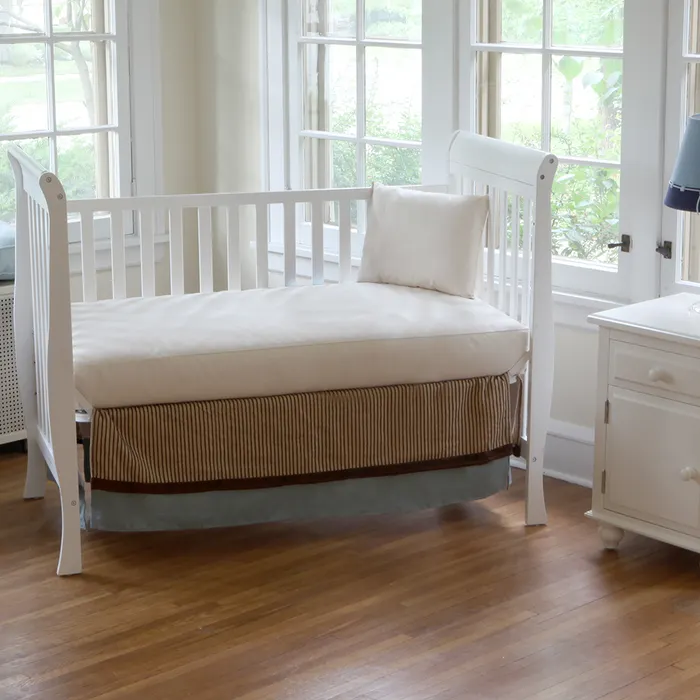











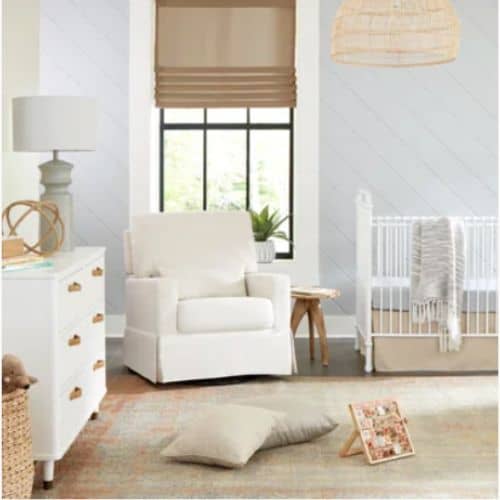
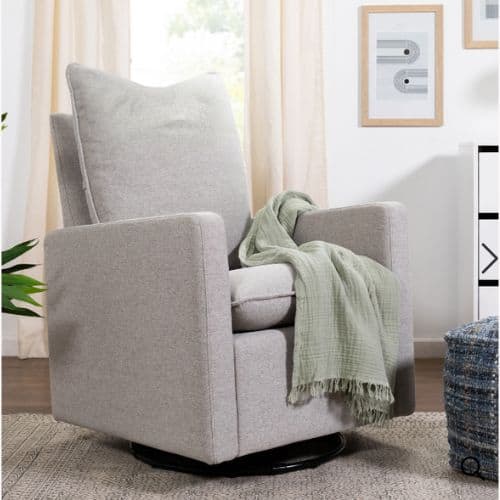
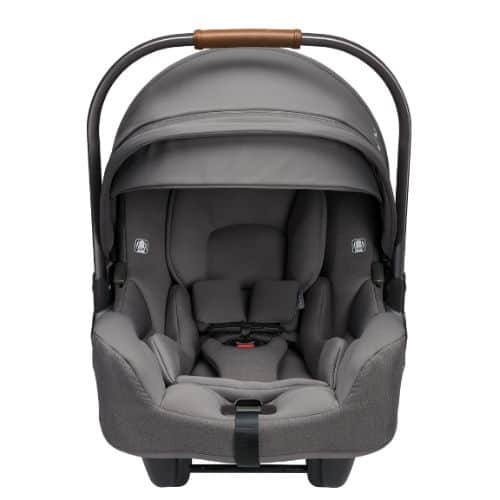




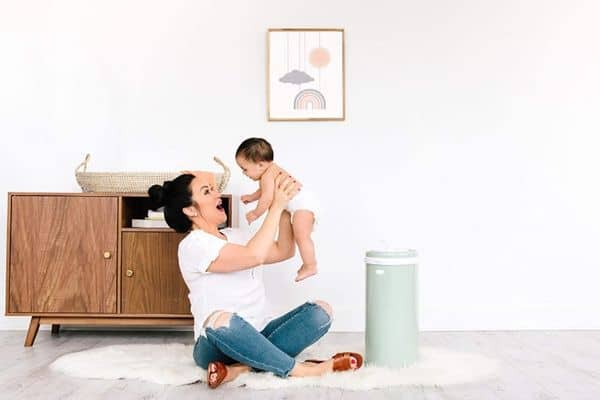





This is a really helpful list. Thanks!
You’re so welcome!
Thank you for this article! This is super helpful for us to get ready for our baby in a few months.
You’re so welcome! Congrats.